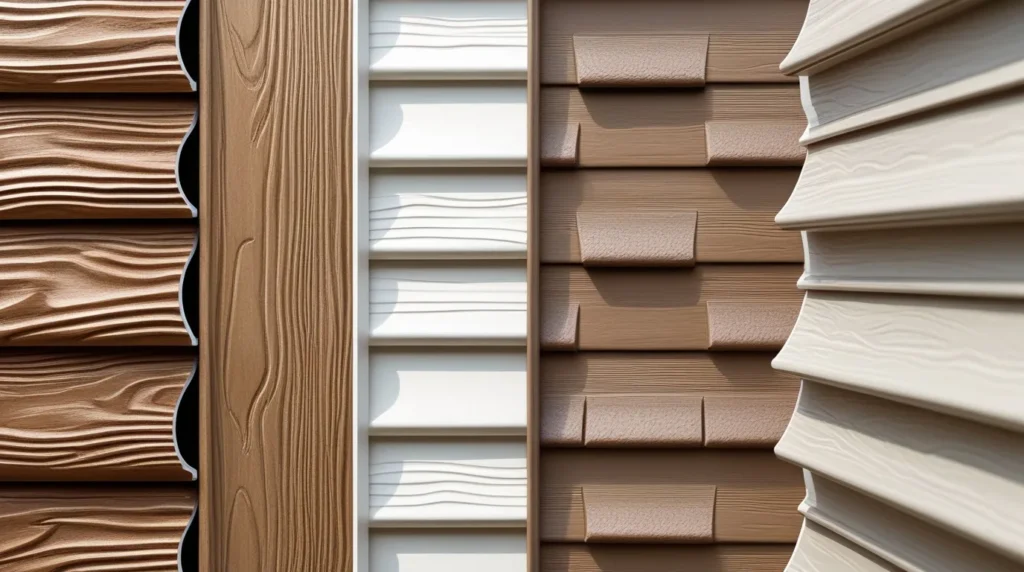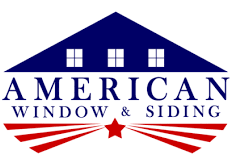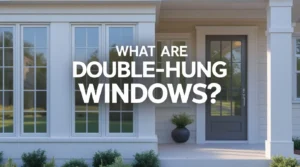Understanding Vinyl Siding: A Simple Guide for Homeowners
Vinyl siding is a strong and flexible material used to protect the outside of homes. It’s made from a type of plastic called PVC. This material doesn’t rot, peel, or fade easily, so it’s perfect for weather protection. You’ll see vinyl siding on many houses because it’s easy to install and doesn’t need much care. It helps your home stay dry in the rain, cool in the summer, and warm during cold winters. Many people ask, what are the different types of vinyl siding? The answer is important because not all vinyl siding is the same. Some are flat, while others are curved. Some types give a clean, modern look, while others have texture that looks like real wood. In this guide, we’ll explore all those types and styles, so you can choose the one that fits your home perfectly.
Why Vinyl Siding Remains a Popular Choice for American Homes
Vinyl siding is a smart choice for many reasons. First, it’s cost-effective. That means you can get great value for your money. It lasts for many years, often 20 to 40, and doesn’t need repainting like wood siding does. Second, vinyl siding is strong. It can handle hot sun, strong winds, heavy rain, and even snow. You won’t have to worry about cracks or warping if it’s installed the right way. Another reason people love vinyl siding is the variety. There are so many styles of vinyl siding to choose from. Whether you want something simple or a design that stands out, there’s a style for everyone. It also comes in many colors—white, tan, blue, gray, and more—so you can match your home’s look exactly how you want. Best of all, you can clean it with just soap and water. That makes it easy for busy families and homeowners who don’t want extra chores.
What Are the Different Types of Vinyl Siding?

Vinyl siding comes in many styles and shapes, each made for a different look or purpose. You’ll find lap siding, Dutch lap, vertical siding, and specialty styles like scalloped or textured panels. Lap siding, for example, is horizontal and overlaps slightly. This classic style is very common in American homes. Types of vinyl siding for houses often begin with lap, but there’s so much more to explore. Dutch lap siding looks like overlapping wooden boards and adds shadows that make the wall more textured. Dutch lap siding vinyl is perfect for homeowners who want a traditional look with more depth. Board and batten is another type that runs vertically. It has wide boards with small strips between them, giving a tall, farmhouse feel. There are also styles with curved edges or even patterns that look like real wood grain. Each type has its own use. Some are better for front-facing walls, while others work well on gables or garages. Choosing the right one depends on your home’s shape, style, and the look you want to achieve. And with different vinyl siding styles available, there’s truly something for every home design and budget.
Grades and Sizes of Vinyl Siding: How to Choose the Right One
Choosing the right grade and size of vinyl siding is just as important as picking the style. These two factors affect how long the siding lasts, how strong it is, and how your home looks overall. Here’s a simple guide to help you decide.
Vinyl Siding Grades: What Do They Mean?
Grades tell you how thick and strong the vinyl siding is. Higher grades cost more but last longer and look better.
Builder Grade (Low Grade)
- Thickness: Around 0.038 inch
- Best for sheds, garages, or budget projects
- Not ideal for homes in rough weather
Mid-Grade
- Thickness: 0.042 to 0.045 inch
- Works well for most houses
- A good mix of quality and value
Premium Grade (High Grade)
- Thickness: 0.048 to 0.055 inch or more
- Strong, lasts longer, and holds color better
- Great for windy, rainy, or snowy areas
Vinyl Siding Sizes: What Should You Know?
Sizes refer to how wide and long the siding panels are. This affects how your house looks and how fast the siding can be installed.
Standard Width Panels
- Usually 6″ to 7″ wide
- Common choice for traditional homes
- Gives a neat, balanced look
Wide Vinyl Siding Panels
- Up to 10″ wide
- Makes homes look more modern
- Fewer lines across the wall
Panel Lengths
- Typically 12 to 16 feet long
- Fewer seams when using longer panels
- Shorter panels may cost less but need more pieces
Vertical Panel Sizes
- Used in types of vertical siding like board and batten
- Often wider to give a tall appearance
- Great for accent walls or full coverage
Exploring the Most Common Vinyl Siding Styles and Profiles

Vinyl siding comes in many different styles and profiles, which means the way the siding panels are shaped and how they fit on the wall. These styles give your home its final look and help show off your taste and design. Below are the most common ones:
- Clapboard (Traditional Lap) – These panels are flat and slightly overlap each other. They give your home a clean, timeless look.
- Dutch Lap – These have a notch or curve at the top edge, creating a shadow line. This adds depth and a bit of texture to the wall.
- Beaded – This style has a rounded “bead” at the bottom of each panel. It looks fancy and is common in classic or colonial-style homes.
- Board and Batten – Used in vertical siding, this style has wide panels with narrow strips (called battens) over the seams.
- Shakes or Scallops – These look like cut wood shingles and are often used on gables or upper walls for decoration.
Each vinyl siding profile creates a different look. The right one depends on your home’s shape, color, and age. Choose what fits your house and your budget.
Comparing Dutch Lap Siding vs. Traditional Vinyl Siding Options
Homeowners often ask about the difference between Dutch lap siding vs traditional siding. Both are horizontal, but they give your home a very different feel.
Traditional siding has a straight, flat surface. It’s simple, modern, and neat. If you want your home to look clean and sharp, this is a good pick. It’s also very easy to clean.
Dutch lap siding, on the other hand, has a curved top edge. This creates a deeper shadow and gives the wall more texture. It’s perfect if you want your house to have an old-style or classic look. It’s popular in historic areas or for homeowners who want charm and detail.
So, dutch lap vs traditional vinyl siding isn’t about better or worse—it’s about the style you like. Dutch lap works well in homes with a lot of trim or decorative parts. Traditional is best for those who prefer straight lines and a modern design.
Horizontal Lap Siding Types: What You Need to Know
Lap siding types are the most common across American homes. The name “lap” comes from the way each panel overlaps the one below it. These types are easy to install and do a great job at keeping water out.
Here are the main types:
- Standard Lap – Simple, flat boards that slightly overlap. Common in older and newer homes alike.
- Dutch Lap – Has a curve at the top of each board. Adds a shadow line for a textured look.
- Beaded Lap – Features a bead along the bottom edge. This adds a bit of elegance to the wall.
- Wide Lap Panels – These are vinyl siding wide panels, often used for a modern appearance. They make the wall look less busy by reducing the number of lines.
These lap styles work well for almost any home, especially one with a lot of exterior wall space. They provide a classic finish, protect the home from bad weather, and match with most trim and window styles.
Understanding Vertical Siding: Styles and Best Use Cases
Types of vertical siding are getting more attention because they give a home a taller and more modern look. Instead of running sideways, the panels go straight up and down. This changes the feel of your home right away.
One of the most common vertical styles is board and batten. It has wide boards with thin battens in between. This gives your wall texture and makes the panels stand out. It’s often used on barns, farmhouses, or craftsman homes, but it looks great on new houses too.
Vertical vinyl siding is also useful in small areas, like:
- Gables (the triangle parts at the top of the wall)
- Bump-outs (small sections that stick out from the main wall)
- Accent walls (to break up large flat surfaces)
Vertical siding is a good choice if you want to try something different. It works well with lap styles too. Some people use types of vertical siding for just one section of the house to make it pop.
Vinyl Siding Patterns and Textures: What Makes Each Unique?

Vinyl siding isn’t just about how it fits on the wall—it’s also about how it looks and feels. Vinyl siding patterns are the textures or shapes printed or molded onto the surface of each panel. These patterns help the siding mimic other materials, like real wood or cedar shakes.
Here are some common vinyl siding pattern options:
- Smooth Finish – Clean and flat. Easy to clean and perfect for modern homes.
- Wood Grain Texture – Imitates the look of real wood planks without the upkeep. Very popular.
- Cedar Shake Look – Made to look like small wood shingles. Adds rustic charm to upper walls.
- Scalloped Patterns – These have a rounded edge and are used for decoration. Often found on gables or porches.
- Brushed Finish – Looks like brushed paint, offering a softer appearance.
- Stone or Brick Textures – Rare, but adds a bold touch for lower walls or accents.
You can mix and match patterns depending on the part of your home. This gives your house a more custom feel without adding a lot to your budget.
Choosing the Best Style for Your Home in Crystal Lake
In Crystal Lake, the weather can shift quickly—from cold, snowy winters to warm, humid summers. That’s why choosing the right vinyl siding matters. You need something that can handle every season while keeping your home looking its best. The good news is that vinyl siding comes in many different styles, colors, and profiles to match almost any home design. If your home has a classic or traditional design, Dutch lap siding is a great fit. It offers a timeless look with added texture from its shadow lines. For a clean, updated feel, wide horizontal panels or vertical styles like board and batten can create a modern finish. Textured patterns such as scalloped or shake siding are often used for detail areas like gables or porches. Color also plays an important role. In Crystal Lake’s varied climate, neutral tones and weather-resistant finishes can keep your exterior fresh-looking all year long. With so many options available, it’s smart to explore samples and talk to professionals. The team at American Window & Siding, Inc. understands the local climate and home styles. They can help guide you through the process and make sure you choose a style that adds curb appeal, value, and long-term performance.
Final Thoughts: Matching Vinyl Siding Types with Long-Term Value
Vinyl siding offers more than just surface beauty—it gives your home strong protection and lasting value. With so many styles, grades, and profiles available, it’s important to think beyond just appearance. Each type of vinyl siding brings its own benefits. Whether you like the clean lines of traditional lap siding or the bold texture of Dutch lap or vertical panels, your choice should reflect both your taste and your home’s needs.
Durability and efficiency also matter. Higher-grade siding may cost a bit more but offers better insulation, color retention, and resistance to damage. Patterned or textured finishes can bring charm and uniqueness without requiring a lot of upkeep. Matching the right vinyl siding style with your home’s design can improve not only how it looks but also how it performs against weather, wear, and time.
With careful planning and expert help, your siding choice can deliver value for years to come. It’s not just about covering your walls—it’s about making a decision that improves your entire home.
If you’re ready to upgrade your home’s exterior with confidence, reach out to American Window & Siding, Inc. Our experts are here to guide you through every step, from choosing the right style to professional installation. Let’s bring your vision to life—starting today.







